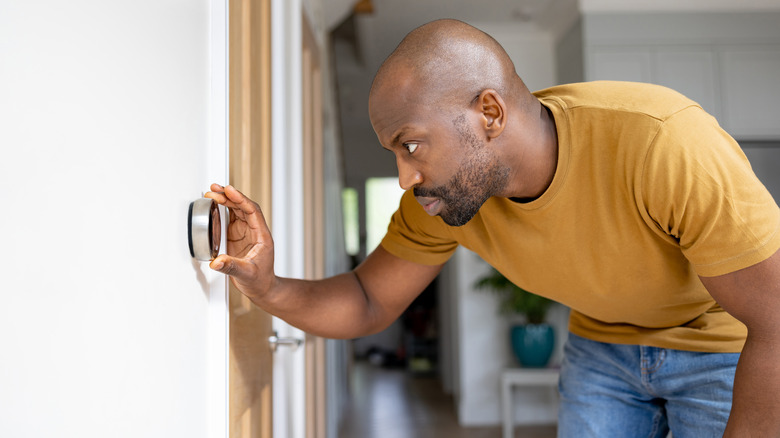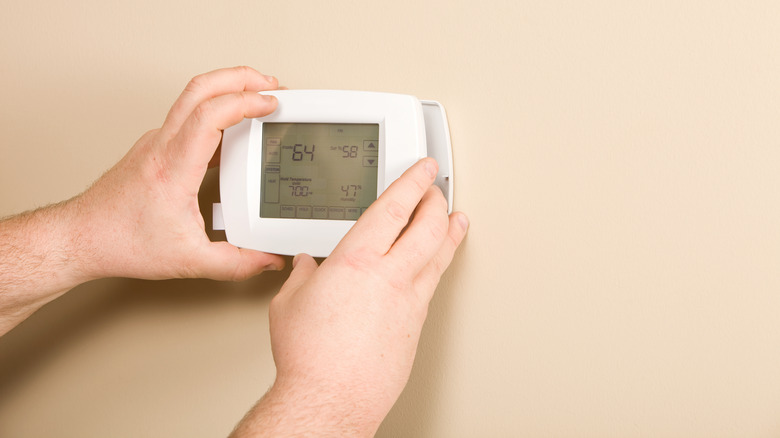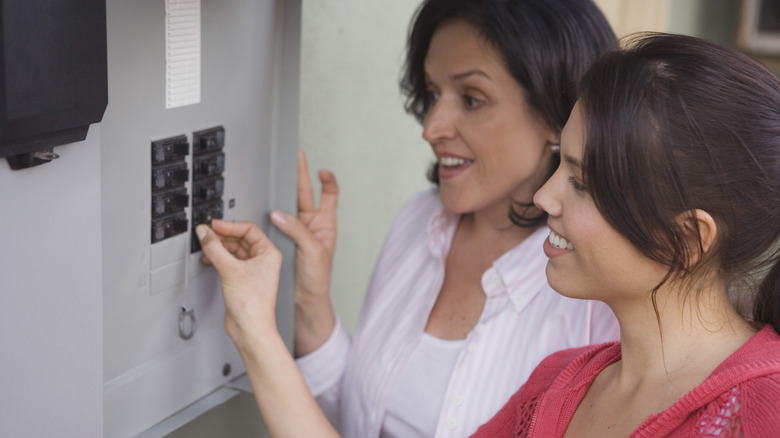Here's Why Your Thermostat Stopped Working
You wake up in the morning and it's ice cold or unbearably hot, so you take a look at your thermostat and it's not working. When it comes to heating and cooling your home, your thermostat is arguably the most important component of your HVAC system. This is because, if it stops working, your system won't turn on. While this isn't a huge problem when the weather is comfortable outside, if the temperature has been extremely low or if there has been a heat wave, you'll want to get it working again as soon as possible. There could be several reasons why your thermostat isn't working. These include that the batteries could be dead, it may have dirty sensors, or the circuit breaker may have tripped.
Fortunately, thermostats are pretty simple devices. They are easy to troubleshoot, whether you have an old-fashioned kind or one of the newer smart thermostats. Before you call in the pros, why not take a few minutes and try to figure out what's wrong yourself? Let's take a look at some of the most common reasons why your thermostat might go on the fritz.
The batteries are dead or the thermostat is dirty
One of the most frequent reasons why a thermostat stops working is because the batteries are dead. Fortunately, this is also one of the easiest fixes. If this is the problem, the screen on your thermostat may dim or turn black. Some units also have a low battery indicator that will blink when the batteries are low. If you suspect that your batteries are the problem, you will want to replace them. To do so, check with your unit's owner's manual to find out the specific battery type required for your model. Commonly-used thermostat batteries include AA, AAA, 3V lithium, or 9V. Once you figure out what type you need, remove the thermostat from the wall and find the battery compartment, replace the old ones with new ones, and return the battery compartment to the thermostat.
If it still isn't working, it's a good idea to check for dirt and debris, as a build-up of dirt can interfere with the sensors in your thermostat. To fix this issue, shut off the breaker and take off the thermostat cover. Then, thoroughly clean the inside of the thermostat with a dry, soft-bristled brush. Once clean, return the cover and turn it back on.
The circuit breaker has tripped
If your circuit breaker trips, you will notice a blank screen on your thermostat and it will not work. A circuit breaker is a safety switch that interrupts electrical currents if there is a problem such as an overloaded or short circuit. Circuit breakers help prevent electrical fires and damage to household systems and components.
To determine if this is the issue, start by locating your home's electrical panel and finding the breaker for your thermostat. It may be labeled "thermostat," "HVAC," or "heating and cooling." Breaker boxes can spark when the switches are reset, so before you get started, put on a pair of safety glasses and stand to the side of the breaker box. If the breaker is in the "Off" position, you can reset it easily by switching it to the "On" position. However, if your breaker is in the middle position, you'll need to move it to the "Off" position first and then switch it to "On."
Don't keep resetting your breaker if it continues to trip, as this can result in a fire. Instead, contact a professional to come out and troubleshoot the underlying problem. Anything from a short circuit to a malfunctioning HVAC system can cause a thermostat circuit to trip repeatedly.


